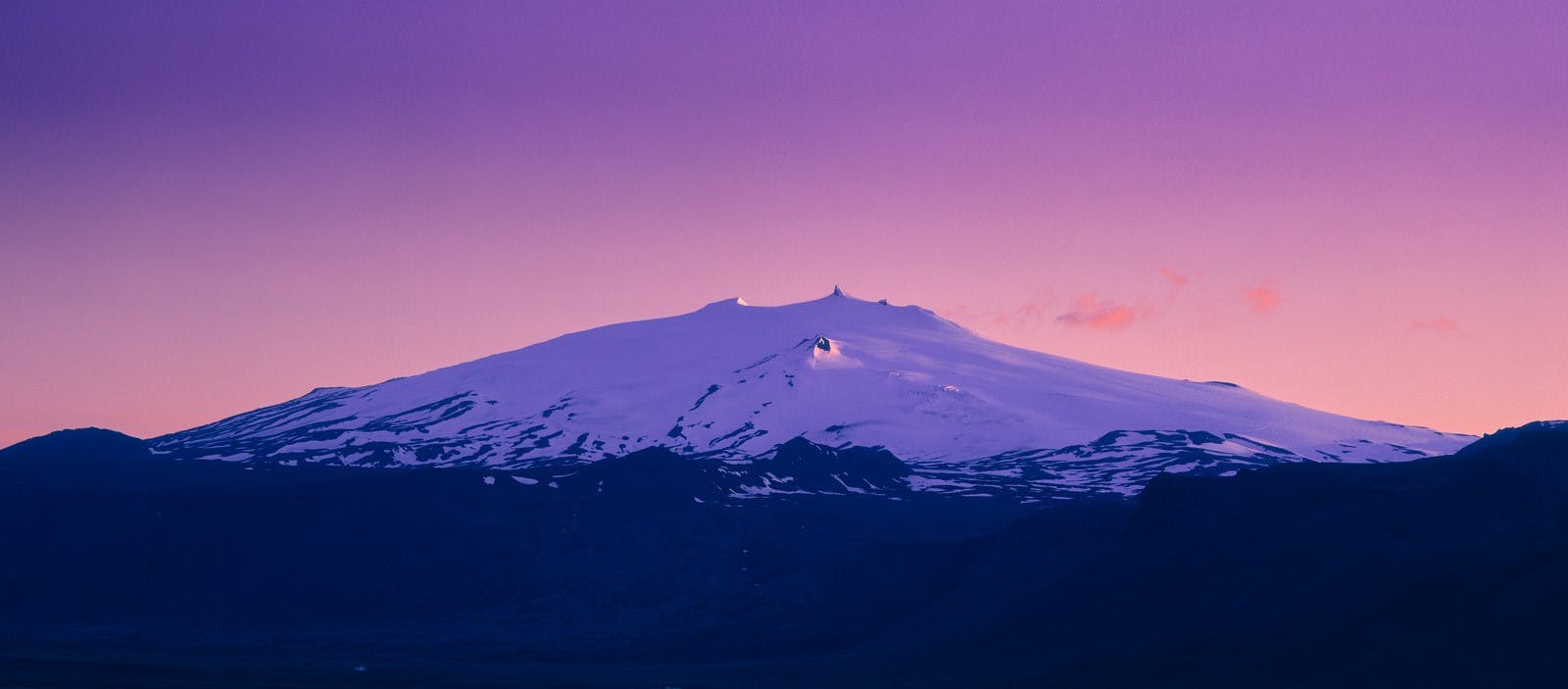
Guide to Snæfellsjökull Glacier
The Snæfellsjökull glacier lies on top of a volcano in the centre of Snæfellsnes National Park. The glacier's peak is 1,446 meters tall, and the ice cap can be seen from Reykjavík on a clear day. The volcano is considered active, though the last eruption occurred 1,800 years ago. Snæfellsjökull is a popular tourist attraction for tourists and Icelanders alike.
Snæfellsjökull has played a significant role in Icelandic history as it is mentioned in the sagas, which are Icelandic literary works that recount historical events and legendary tales. Additionally, it served as a navigational landmark for sailors and was often used as a reference point for coastal navigation by fishing vessels and other ships.
Snæfellsjökull in Folklore

The glacier has long been associated with folklore and mysticism in Iceland. Snæfellsjökull is believed to be one of the seven main energy centres of the Earth, often referred to as "chakra points". Snæfellsjökull is considered a source of spiritual power and has been linked to various supernatural and mythological tales in Iceland throughout the centuries.
There are also tales of elves, trolls, and other supernatural beings residing in and around the glacier. These stories have been passed down through generations, painting a picture of a landscape that is alive with hidden beings and ancient magic. Some locals even believe that extraterrestrial beings have visited the glacier due to its special energy.
Snæfellsjökull in Literature

One of the most famous literary references to Snæfellsjökull is in Jules Verne's classic science fiction novel, "Journey to the Center of the Earth." In the story, the Icelandic glacier serves as the entrance to a subterranean world. The protagonist, Professor Lidenbrock, along with his nephew Axel and their guide Hans, embark on a daring adventure, descending into the depths of the Earth through a volcanic tube beneath Snæfellsjökull.
Verne's depiction of the glacier as a gateway to the Earth's core has further amplified its mystique in popular culture. The novel paints the glacier as a place of wonder and discovery, where the boundaries between the known and the unknown blur.
Flora and Fauna of Snæfellsjökull
The Snæfellsjökull region, with its diverse landscapes ranging from the icy glacier cap to the coastal areas, harbours a variety of plant and animal species. The combination of volcanic terrain, glacial influences, and proximity to the sea creates a unique ecosystem that supports a range of life forms.
Wildlife
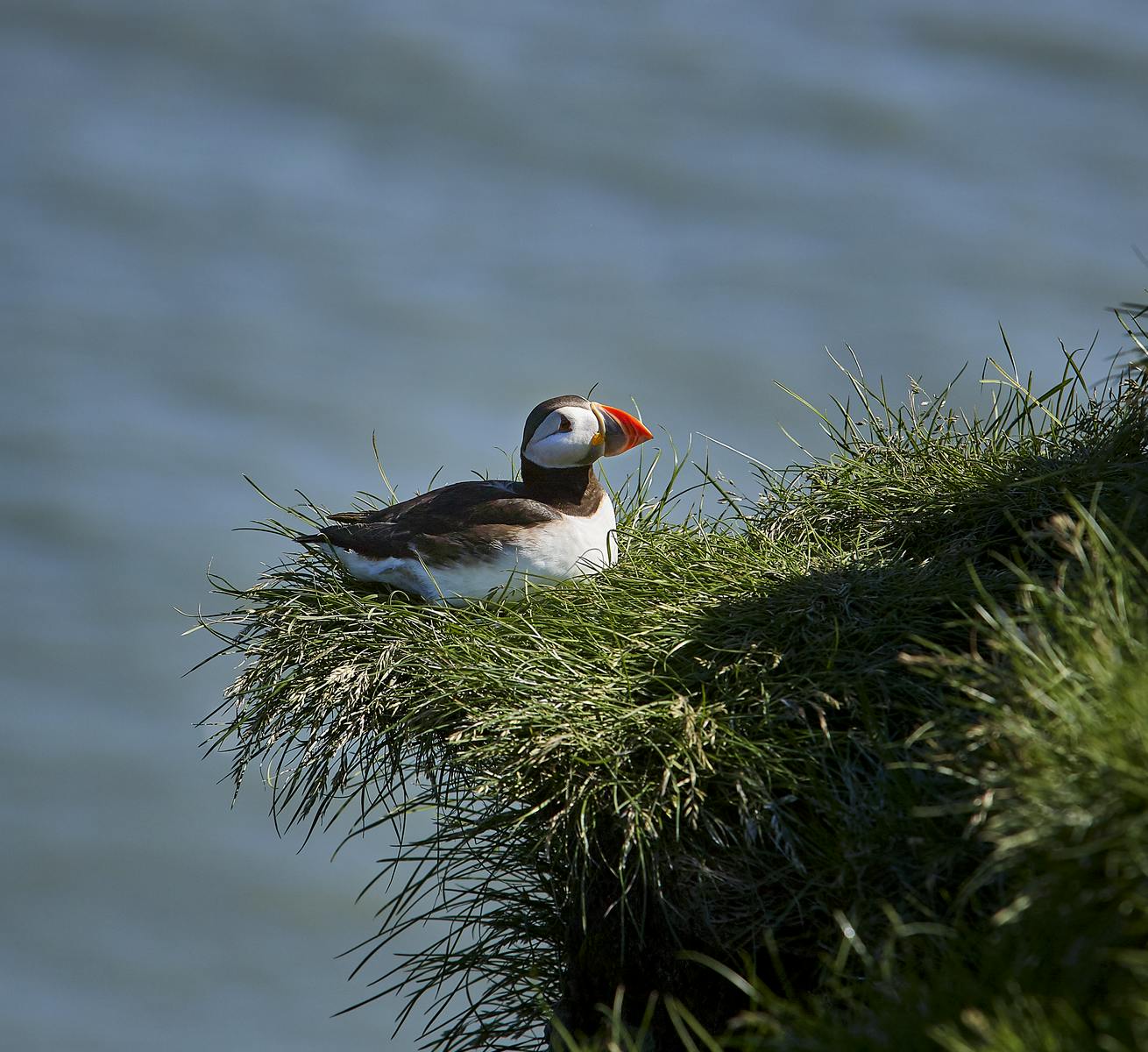
The surrounding areas around the Snæfellsnes Peninsula are rich in marine-, bird-, and wildlife.
- Birds: Puffins, guillemots, and kittiwakes are seabirds that nest on the cliffs. The Arctic tern, known for its long migratory patterns, can be spotted in the region.
- Mammals: The surrounding areas are home to species like the Arctic fox, Iceland's only native land mammal. Seals are a common sight in the coastal waters, especially around the seal colonies at Ytri-Tunga beach.
- Marine Life: Orcas, minke whales, humpback whales, and dolphins can occasionally be spotted, especially during the summer months when they come to feed on the abundant fish and plankton.
Flora
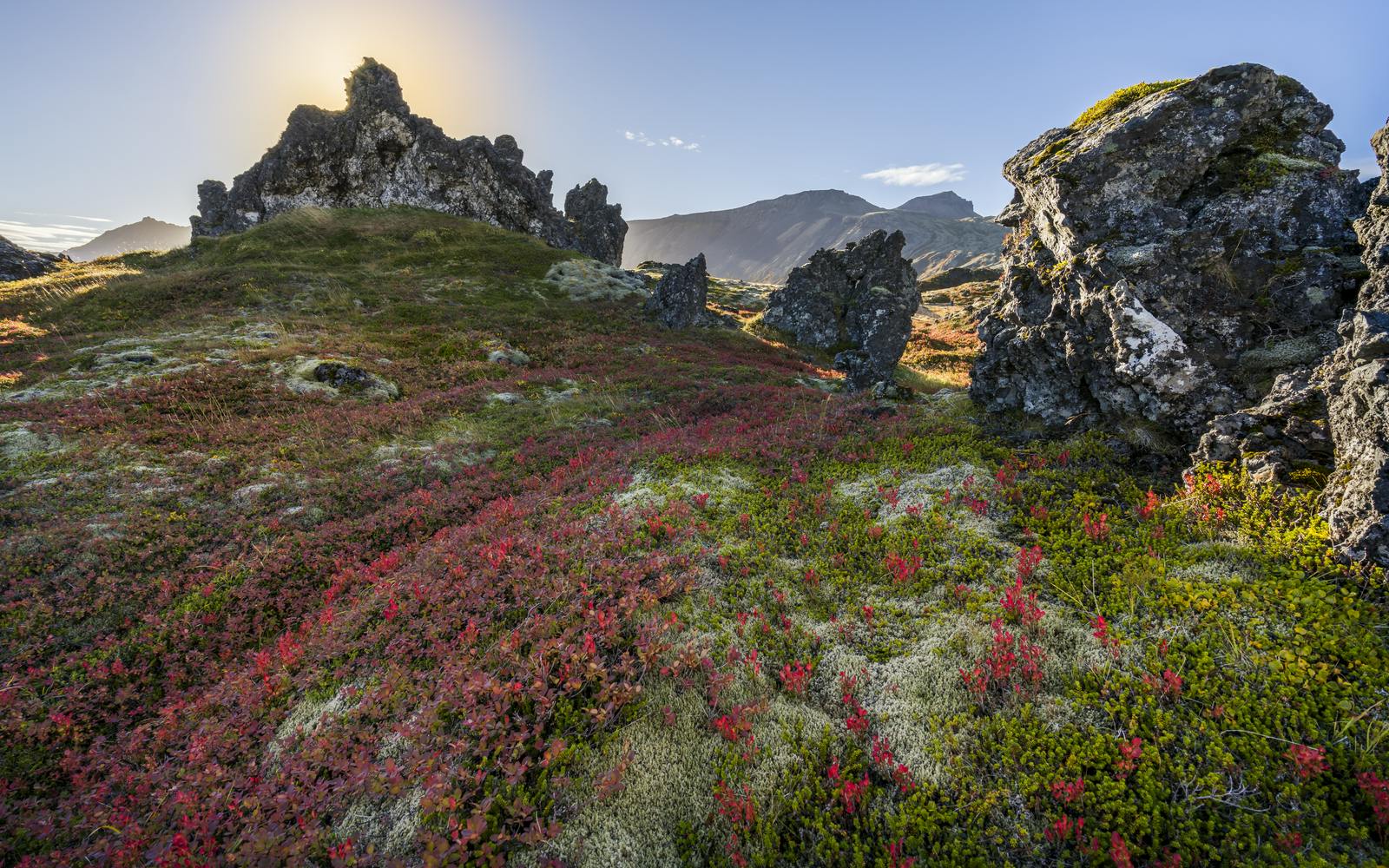
The flora and fauna around Snæfellsjökull are a testament to nature's ability to adapt and thrive in diverse conditions.
- Mosses and Lichens: Due to the harsh climatic conditions, especially closer to the glacier, mosses and lichens are predominant. They are hardy species that can withstand the cold and play a crucial role in soil formation.
- Flowering Plants: In the lower elevations and protected areas, one can find a variety of Arctic wildflowers, such as the Arctic thyme, sea thrift, and blue sea lavender.
- Grasses and Shrubs: Dwarf willow and birch shrubs are common, especially in areas sheltered from the harshest weather. These shrubs and various grasses provide a food source for grazing animals.
Distance from Reykjavík
Snæfellsjökull is about 190 kilometres from Reykjavík, and the drive takes about 2.5 hours. From Reykjavík, take Route 1 north through the town of Borgarnes and then turn left onto Route 54.
Head west on Route 54 across the peninsula for about 98 kilometres, connecting to Route 574. Continue west on Route 574 for about 35 kilometres. On the right-hand side, you'll find the road leading up to the volcano, and signs are posted up to a parking lot.
Can I learn about glaciers in Reykjavík?
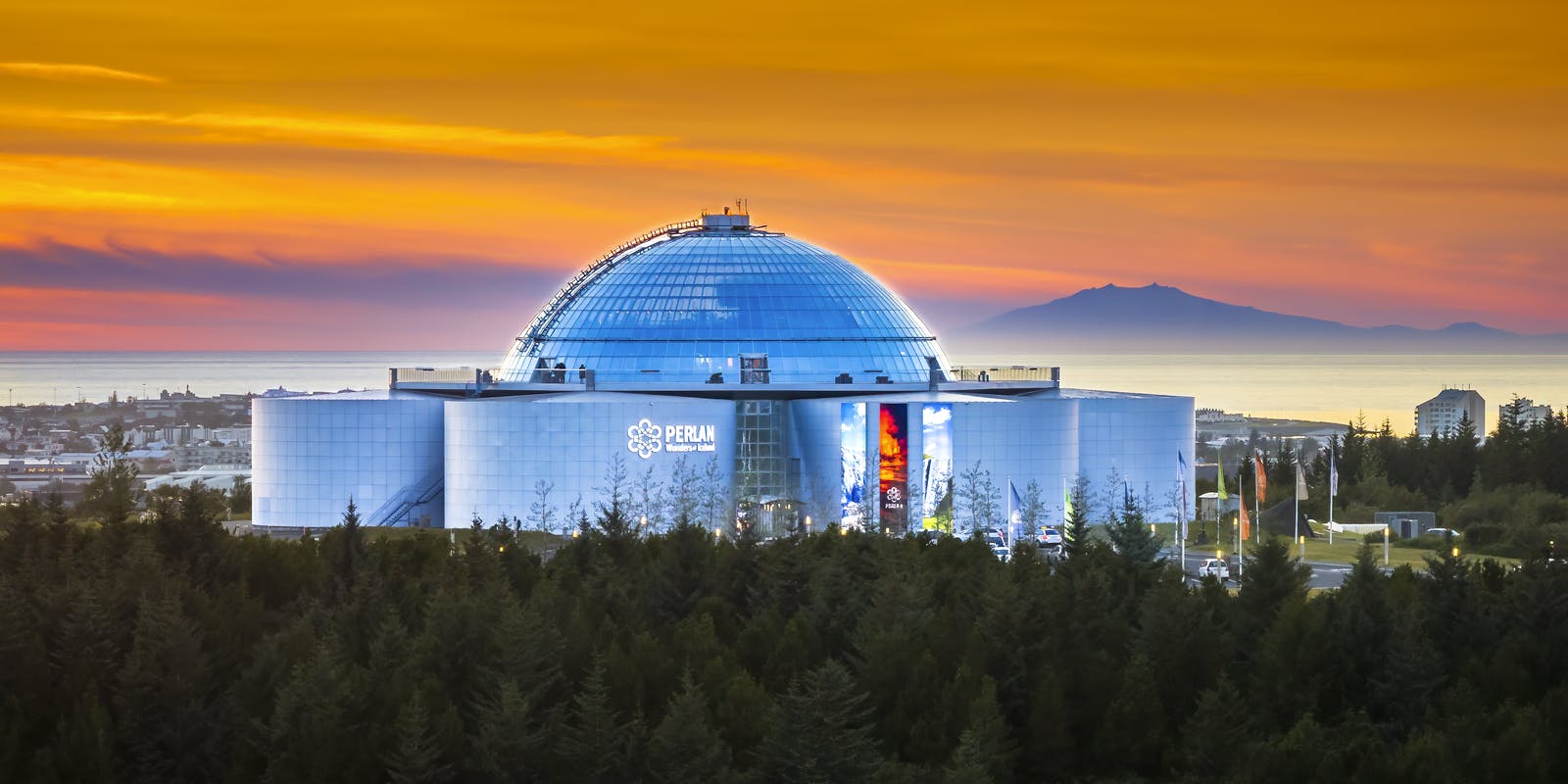
Perlan is a fascinating museum in Reykjavík that has excellent exhibitions highlighting the unique geology of Iceland. Here, you can learn about glaciers, ice caves, volcanoes, and geothermal energy, among other amazing geological wonders.
Located on Öskjuhlíð, Perlan is an ideal place to learn about Iceland's natural wonders and also enjoy the observation deck, which offers panoramic views of Reykjavík. If you have limited time in Iceland and won't make it to Snæfellsjökull, learn about glaciers in the heart of Reykjavík!
The glacial exhibit offers visitors an insight into the glacial formations and processes that shape landmarks like Snæfellsjökull. Through interactive displays, educational panels, and immersive experiences, Perlan bridges the gap between urban Reykjavík and the wild landscapes that define Iceland.
Snæfellsjökull FAQ
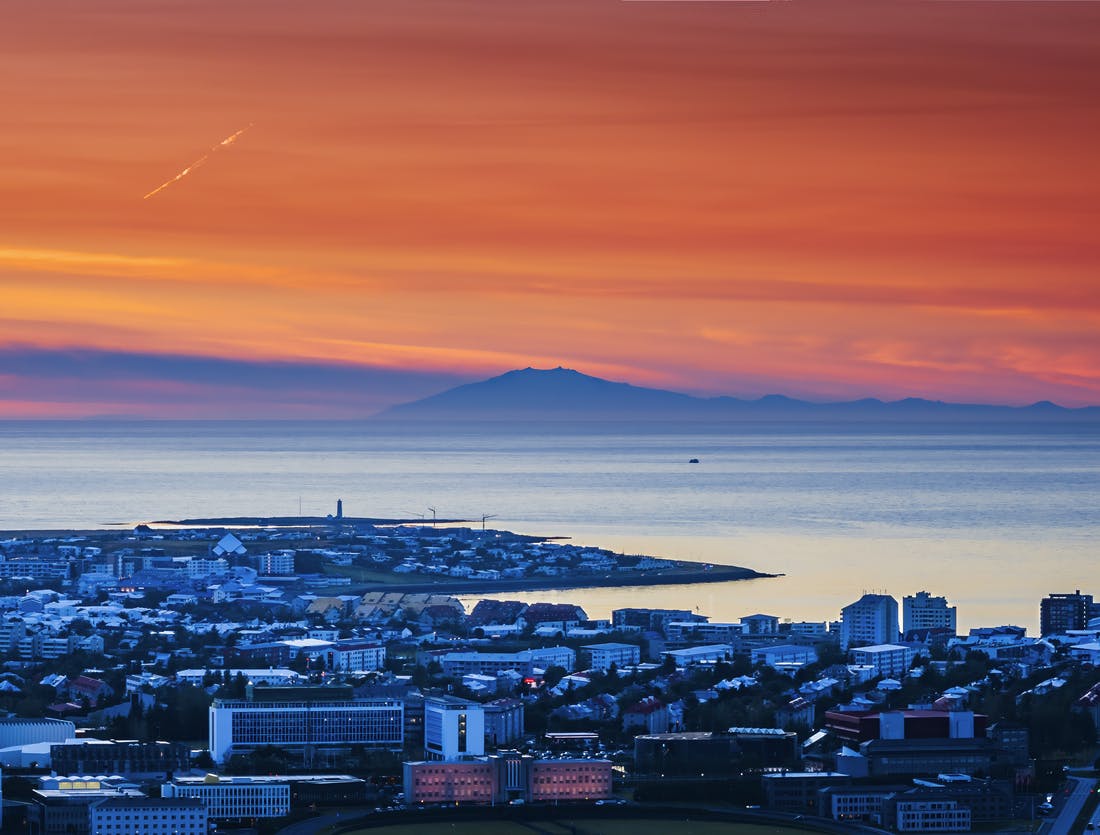
Is it safe to visit Snæfellsjökull?
Travellers can explore the area around the glacier but should not venture onto it without a guide as it can be dangerous. Numerous tours offer glacier hiking on Snæfellsjökull, where you can explore the majestic ice cap with a trained glacier guide.
Can you see Snæfellsjökull from Reykjavík?
Yes, it is possible to see Snæfellsjökull Glacier looming in the west from Reykjavík. On clear days, one can even catch a distant glimpse from Perlan's observation deck.
Is Snæfellsjökull an active volcano?
The volcano is considered active, though the last eruption occurred 1,800 years ago. There are no indications of an imminent eruption.
How Big is Snæfellsjökull?
Snæfellsjökull is one of Iceland's prominent natural features and covers an area of approximately 11 square kilometres. In addition to its size, it is notable for its height as the glacier reaches a towering elevation of 1,446 meters above sea level at its highest point.







